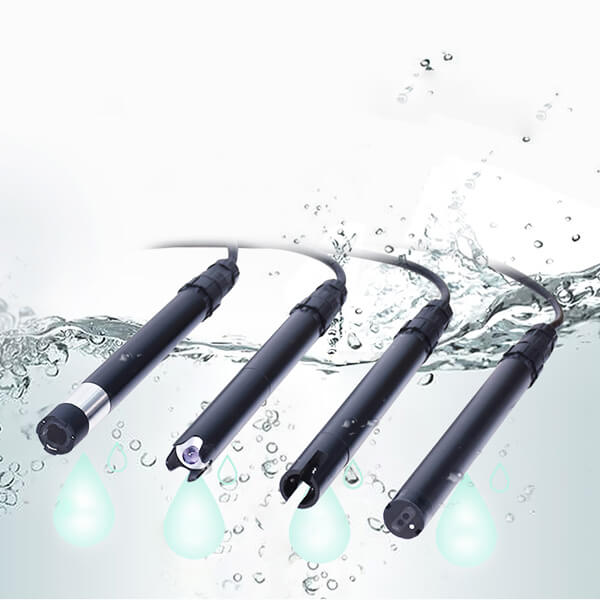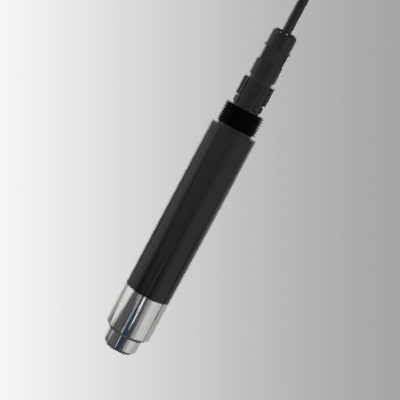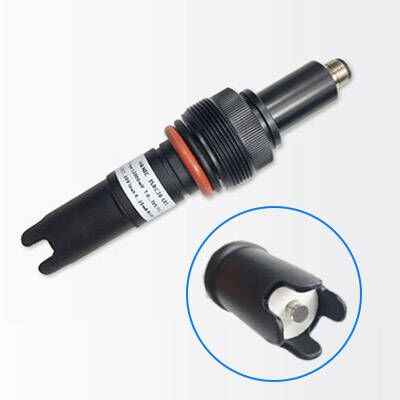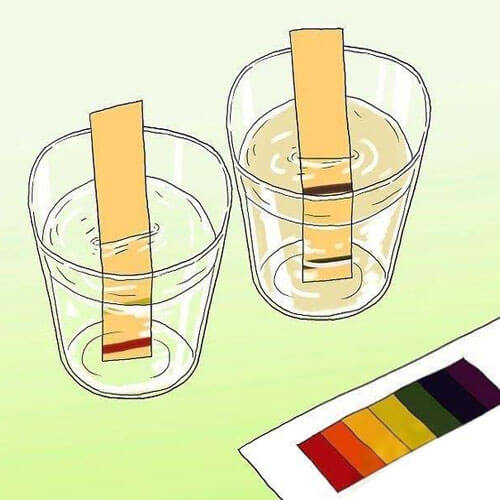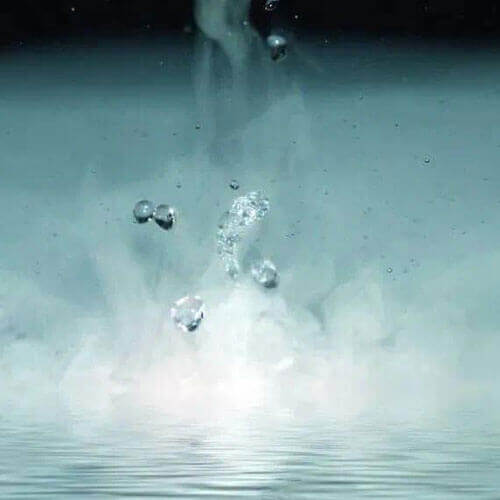Water is the source of life, integral to every aspect of human production and daily living. In many scenarios, ensuring health and quality requires monitoring water quality, and water quality sensors are essential tools for achieving this goal. If you have questions about selecting or purchasing water quality sensors, maybe this article can help you. As a trusted and proven brand, Renke will guide you through understanding various types of water quality sensors and comprehensive water quality monitoring systems.
Water quality sensors utilize chemical, physical, or biological reactions to measure parameters such as conductivity, dissolved oxygen, pH, COD, residual chlorine, and turbidity in solutions. These sensors provide valuable data support for researchers and are widely used in laboratory studies, marine water quality assessments, aquaculture, and wastewater treatment.
What is a water quality sensor?
Water quality sensor is a general term for multiple sensors that measure PH, residual chlorine, turbidity, suspended solids, COD, BOD, conductivity, and dissolved oxygen. Water quality does not refer to a specific day parameter, it contains multiple elements to measure water conditions.
Types of water quality sensors
Water quality is a general concept, and it covers a wide range. Therefore, building a complete water quality monitoring system is a complicated project. The good news is that with these eleven Renke water quality sensors and a water quality monitoring host, you can easily build your water quality monitoring system.
PH Sensor
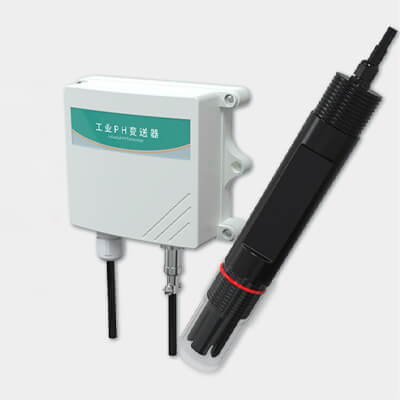
When conducting water quality testing, the water pH value is probably the parameter you hear about the most. You should know that the pH of household water needs to be between 6.5 and 8.5 because most microorganisms thrive in a pH range of 4.5 to 9, with 6.5 to 7.5 being the ideal range. For industrial water, the pH requirements are even stricter. You’ll find that when the pH drops below 6.5, fungi start competing with bacteria. And when the pH reaches 4.5, fungi completely take over. On the other hand, if the pH goes above 9, the metabolic rates of microorganisms are significantly hindered.
In order to monitor the PH value of industrial wastewater, we generally use PH sensors. The PH sensor is one of a water quality sensor used to monitor the concentration of hydrogen ions in the tested solution and convert it into a corresponding usable output signal. It is suitable for industrial sewage, domestic sewage, agriculture, aquaculture, and other scenarios in a non-corrosive weak acid and weak alkali environment.
Did you know? There are many types of pH sensors, and you should choose the best sensor according to the properties of the measured solution. Experienced Renke experts have provided six types of pH sensors for different solution properties. They include composite pH sensors used in non-corrosive weak acid and weak alkali solutions, desulfurization pH sensors used in wet flue gas desulfurization processes, PTFE pH sensors used in strong acid and strong alkali solutions, electroplating pH sensors used in solutions with high organic content, glass pH sensors used in corrosive liquids, and pH antimony sensors used in solutions containing hydrofluoric acid. For more details, you can check out this article on types of pH sensors.
Conductivity Sensor
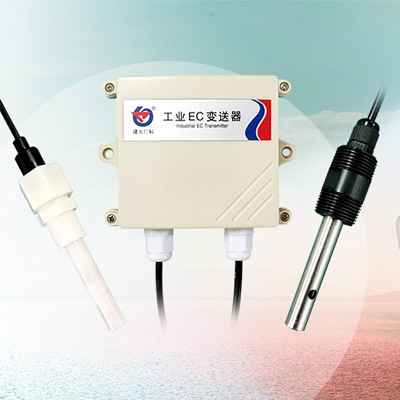
We know that conductivity refers to the ability of a solution to conduct electricity. In water quality sensors, conductivity is one of the important indicators reflecting water quality. The higher the conductivity in water, the better its ability to conduct electricity, and the higher the TDS (Total Dissolved Solids) value in the water. You may ask, what is the TDS value? It represents the concentration of dissolved impurities in water. If the TDS value is high, it indicates that there are more impurities in the water. If the TDS value is low, it means the water is purer, and consequently, the conductivity will be lower.
Currently, on the market, conductivity sensors are divided into electrode conductivity sensors, inductive conductivity sensors and ultrasonic conductivity sensors according to different measurement principles. The electrode conductivity sensor adopts resistance measurement method. The inductive conductivity sensor realizes the measurement based on the electromagnetic induction. The ultrasonic conductivity sensor according to the changes of ultrasonic waves in liquids, and the first two sensors are widely used.
Renke brand RS-EC-*-2-*-EX is an excellent electrode conductivity sensor. It has high measurement accuracy and the error is only ±1%FS. The measurement range is wide, up to 0~20000μS/cm. In order to meet your different use sites, we have designed two types of industrial conductivity sensor and integrated conductivity sensor for you to choose from.
Residual Chlorine Sensor
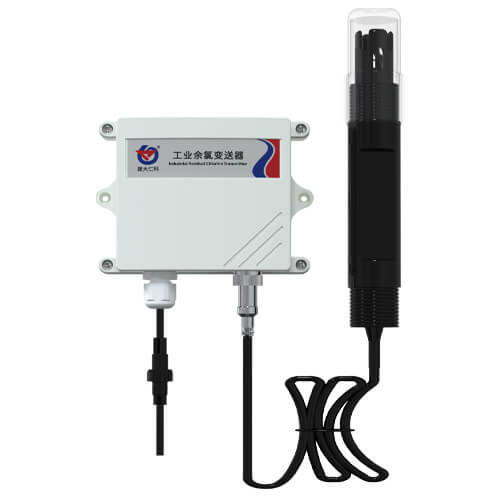
You should know that both drinking water and swimming pools use disinfectants for sterilization, and these disinfectants are chlorine-based compounds. Residual chlorine refers to the total amount of free chlorine and combined chlorine remaining in the water after chlorination. Too much chlorine will give the water a bad smell, and too little will make the water lose its ability to maintain sterilization. Therefore, you need to use a residual chlorine sensor to monitor its concentration.
Our residual chlorine sensor (RS-CL-*-2-20-*-EX) can help you measure residual chlorine, chlorine dioxide and ozone in water. It has a simple structure and is easy to clean and replace. It can be used in drinking water companies, canning factories, swimming pools, cooling water circulation and other occasions where continuous monitoring of chlorine content is required.
Turbidity Sensor
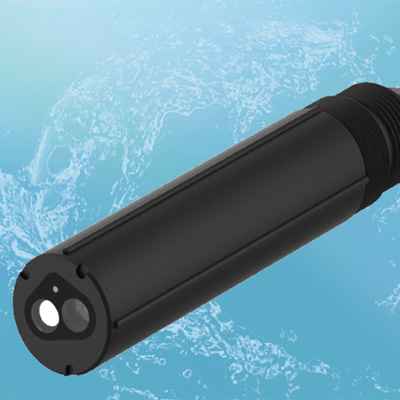
Your eyes can clearly see whether the water is clear or not, which is related to turbidity. Turbidity is related to suspended particles in water, and suspended particles will diffusely reflect the incident light. Therefore, turbidity sensors usually use scattered light in a 90-degree direction as a test signal, and calculate the turbidity value by measuring the intensity of the scattered light. It is worth noting that scattered light and turbidity conform to a multi-segment linear relationship, so the sensor needs to be calibrated at multiple points.
Our Renke turbidity sensor (RS-ZD-*-EX) is designed using the principle of light scattering measurement. By precisely measuring the amount of light passing through the water, it calculates the concentration of suspended solids. The content of suspended matter is closely related to the turbidity of the water, and the final value is output after linearization. This sensor is widely used for accurate measurement of rivers, wastewater, and sewage.
Dissolved Oxygen Sensor
Now let’s learn about another important water quality parameter – dissolved oxygen. As the name suggests, it refers to molecular oxygen dissolved in water. I think you should have guessed that this is a very important parameter for aquariums or aquaculture industries. Because the oxygen content in water directly affects the growth and health of aquatic organisms. So we need to accurately monitor the dissolved oxygen content.
Our dissolved oxygen sensor (RS-LDO*-*-EX) can automatically and continuously monitor dissolved oxygen values. It use the principle of fluorescence measurement (the quenching of active fluorescence by specific substances in physics). This process does not consume oxygen and does not require electrolytes. We offer two dissolved oxygen sensors for seawater or freshwater environments to achieve dissolved oxygen monitoring in different environments such as aquaculture, aquariums, and seawater quality.
ORP Sensor
ORP (Oxidation-Reduction Potential) is an indicator of the redox potential in a solution, reflecting the relative concentrations of oxidizing and reducing agents in the water. ORP is a voltage value measured in millivolts (mV). What you need to know is that the higher the ORP value, the greater the concentration of oxidizing substances and the lower the concentration of reducing substances. It can reflect the ability of lakes or rivers to decompose organic pollutants by electrochemical means. ORP monitoring is beneficial to water treatment, environmental monitoring, industrial production and other fields.
When purchasing an ORP sensor, you should choose one with a wide range of applications. For example, our ORP sensor (RS-ORP-N01-3-EX) features electrodes made of high-purity platinum, offering excellent resistance to acids, alkalis, and oxidation. It is suitable for environments such as industrial wastewater containing cyanide or chromium, natural water bodies like rivers and lakes, and aquaculture industries. It is commonly used in conjunction with pH sensors.
COD Sensor
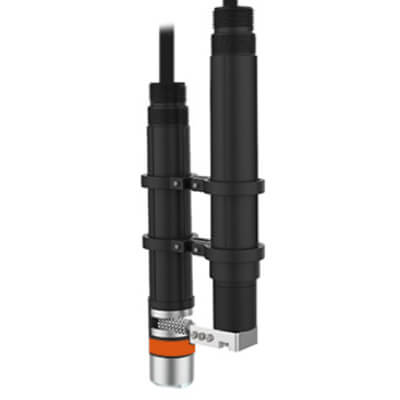
COD is chemical oxygen demand. Under certain conditions, COD is an indicator of the amount of reducing substances (especially organic matter) in water. The larger the COD value, the more serious the organic pollution in the water. Many organic substances dissolved in water absorb ultraviolet light. Therefore, by measuring the degree of absorption of 254nm wavelength ultraviolet light by these organic substances, the content of dissolved organic pollutants in water can be accurately measured.
Renke COD sensor(RS-COD-*-2-EX) uses two light sources, one ultraviolet light is used to measure the COD content in the water, the other reference light is used to measure the turbidity of the water body, and the light path attenuation is compensated by a specific algorithm and can be used to a certain extent. Eliminate the interference of particulate suspended matter impurities, so as to achieve more stable and reliable measurement.
Ammonia Nitrogen Ion Sensor
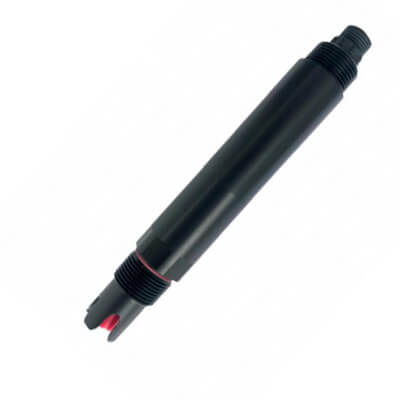
As we all know, in aquaculture, high levels of ammonia nitrogen in water can be toxic to fish and shrimp, leading to their death. In aquariums and aquaculture environments, the main sources of ammonia nitrogen are feed and excrement from aquatic organisms. In nature, the primary sources of ammonia nitrogen in rivers and oceans are various forms of pollution. Therefore, we need to rely on ammonia nitrogen sensors to monitor the concentration of ammonia nitrogen in the water.
Our ammonia nitrogen sensor (RS-NHN-*-3/4/5-*-EX) effectively measures the combined nitrogen in the form of free ammonia (NH3) and ammonium ions (NH4+). It automatically compensates for temperature and pH, making it suitable for high-precision measurements in various environments. This sensor can be installed directly, offering a more cost-effective, environmentally friendly, and convenient solution compared to traditional ammonia nitrogen analyzers.
Chlorophyll Sensor
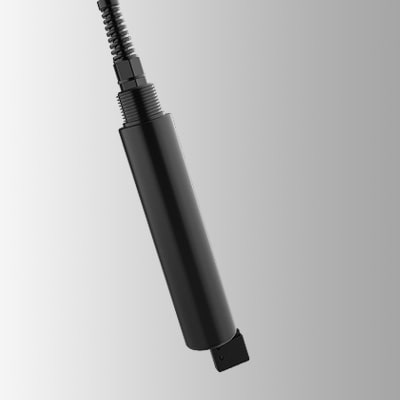
We know that when blue-green algae proliferate in large quantities in water, they release a significant amount of chlorophyll. The concentration of chlorophyll a is closely related to water quality and can reflect the degree of eutrophication. You should know that in reservoirs, excellent water quality is characterized by a chlorophyll a concentration below 5 μg/L, good water quality falls between 5 to 10 μg/L, and water with a concentration above 30 μg/L indicates poor quality. Chlorophyll sensors are a convenient tool to help us monitor the algal conditions in rivers, lakes, ponds, and aquaculture environments.
We recommend this chlorophyll sensor (RS-CH-*-2-EX), which uses fluorescence principles and fiber-optic transmission design to measure chlorophyll content. It incorporates filtering algorithms and automatic temperature compensation, making it resistant to external light interference. The sensor outputs relative fluorescence units, which makes it easier to analyze the relationship between fluorescence intensity and chlorophyll concentration based on the actual conditions.
Green Algae Sensor
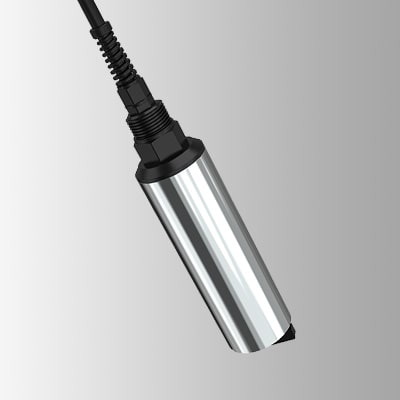
Did you know? Compared to traditional manual counting methods, blue-green algae sensors using fluorescence principles offer better repeatability and stability, enabling real-time online monitoring. The electrodes are equipped with an automatic cleaning brush to eliminate bubbles and reduce the impact of contamination on measurements. Even in harsh environments, it maintains excellent stability. This sensor can serve as an early warning system for algal blooms.
The blue-green algae sensor (RS-BA-*-2-EX) produced by Renke is widely used in river sections, lakes, reservoirs, and other environments. It is the best choice for monitoring phytoplankton, algal growth, water eutrophication, algal bloom early warning, and studying aquatic ecosystems.
Water Ion Sensor
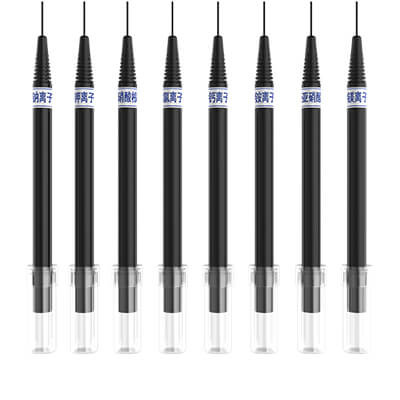
Our water ion sensors are devices that measures the concentration of various ions in water. There are eight types of ammonium ions, nitrites, nitrates, magnesium ions, sodium ions, potassium ions, chloride ions, and calcium ions.
Ion sensors are widely used in industrial wastewater, surface water, drinking water, seawater and ion on-line automatic continuous analysis and detection in industrial production process control. The ion concentration and temperature values of the aqueous solution are continuously monitored.
Water quality monitoring system

The following are the main components and functions of a water quality monitoring system:
1. Water quality sensors: Water quality monitoring systems use a variety of sensors to measure physical, chemical, and biological parameters in water bodies, such as pH, dissolved oxygen concentration, temperature, turbidity, chemical oxidation-reduction potential (ORP), etc. Sensors are usually installed in water bodies or water treatment equipment and send data to data acquisition devices through wiring or signal transmission devices.
2. Data collectors: Data collectors are used to store and record data collected from sensors. Data collectors can be dedicated monitoring hosts or computer systems connected using a network. Data acquisition devices are also responsible for managing the transmission, storage, and backup of data.
3. Data management tools: Water quality monitoring systems use data processing and analysis tools to evaluate the collected data. These tools can process and analyze data according to preset standards and thresholds, generate water quality assessment reports, and detect abnormal conditions or potential pollution events.
4. Reporting and alert systems: Water quality monitoring systems can also generate regular water quality reports, providing detailed data analysis and evaluation to help users understand the health of water bodies. In addition, the system can also set up an alarm mechanism. Once it detects that the preset threshold is exceeded or an abnormal situation occurs, an alarm message will be sent to relevant personnel immediately so that timely measures can be taken.
Water quality monitoring covers a wide range of fields, and different application environments require monitoring different parameters. Renke, as a water quality manufacturer with over ten years of R&D and production experience, has accumulated extensive expertise while providing products and services to users worldwide. On one hand, we can answer any questions you may encounter based on our years of professional knowledge; on the other hand, we can quickly assist you in selecting accurate and cost-effective water quality sensors. Whether you need sensors for research purposes or for integration into industrial systems, feel free to explore our selection and contact our customer service team for any further inquiries. Our professional technicians are ready to provide you with the best matching solutions. For more information on water quality sensors, please refer to our PDF document.

